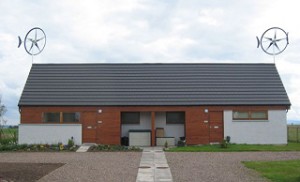From Guest Blogger Alyssa Winters: Five Eco-friendly Ways to Renovate Your Home

We all want to look our house better so we allocate a bigger amount of our monthly budget for our savings to cover the renovation cost.
But did you know that there’s a more cost-efficient option for home renovation?
By choosing eco-friendly ways, you don’t only save a few bucks but you also save Mother Earth. Here are the eco-friendly ways that you can apply in renovating your house.
- Reuse What you Have
Reusing items that you have will save you lots of money when you are renovating your home.
What are the items that you can still reuse?
These lists are items that can be reused feasibly and successfully:
- Roof tiles that are still in good condition
- Interior Doors
- Appliances
- Cabinetry
- Some double glazed windows
- Cabinet and door hardware
- Faucets and toilets that still work in accordance with current water standard
There are materials though that should not be reused as it would cost more. These items should rather be replaced:
- Vintage windows and light fixtures
- Wood floors and Baseboards
- Sinks
- Obsolete toilets and faucets that don’t meet the water standard
- Think Energy-efficient
Since you’re renovating your house, why not make the most of it by adding some inexpensive yet energy-efficient upgrades?
This will not only lower your electricity bill, it will also be the solution to most common house problems such as mold, air leak and other allergens that are harmful to your family’s health.
Below are some tips on how to have a smart home that is eco-friendly and energy-efficient:
- Improve the air quality of your home by condensation, water intrusion or excess moisture.
- Allot more space for insulation in your walls by using the least amount of framing as allowed.
- Opt for a shower head that is single low flow
- Have your water pumps insulated and opt for solar water heaters
- Use Recycled Glass
Recycled glass is an environmental friendly unique piece of material. Its use in home decoration and renovation has been increasing.
In line with this, an increasing number of local communities have begun to create recycling programs which includes glasses. Glass is a kind of material that is durable and can be used to almost anywhere – such as storage bottles, beverage containers, tiles, fiberglass materials, tiles, insulations and a lot more.
- Use Water-based Paints with Natural Pigments
Using commercial paintings don’t just hurt your pockets; they also contain harmful toxins in their ingredients that are dangerous in our health.
If you want to transform your home into a cozy, vibrant and eco-friendly place, make your own paint instead.
Yes, lots of nature-enthusiasts are into DIY when it comes to the paint that they’re using in their home. These paints are made of natural ingredients that don’t contain any harmful chemicals. Plus, they are more budget-friendly. Creating your own paint will also give you the satisfaction of achieving your desired color as some commercialized paints don’t offer the specific hue that you want.
- Fill Cavity Walls with Insulation
Do you want a warmer home plus your heating bills tremendously lowered?
Insulating your cavity walls would be the answer. This process is simple and cost-efficient, plus it’s also eco-friendly.
You might be wondering. Is your home suitable for cavity wall insulation?
Your home would be suitable if you have unfilled cavity external walls, good condition brick or masonry work and your wall cavity that is at least 35mm wide.
You can have it installed professionally. The most common material used is the polystyrene beads as it has carbon coating for maximum performance.
You don’t need to break a bank when you’re renovating your house anymore. Follow these eco-friendly tips to achieve a home that is cozy, eco-friendly and cost-efficient.

From the article:
“Your home would be suitable if you have unfilled cavity external walls, good condition brick or masonry work and your wall cavity that is at least 35mm wide.”
I’m not quite sure what she means by 35mm wide, but I assume that she means 35mm thick. That is far thicker than most building codes require and I doubt that there is a very high percentage of buildings with walls having a cavity that thick. 35mm is about 13.8 inches thick. For many years, building codes required 2 x 4 studs and 2 x 4 studs are actually about 1.5″ x 3.5″. Now some codes require using 2 x 6 studs which are actually about 1.5″ x 5.5″. Thus, the maximum thickness of a wall cavity that one is likely to encounter is only about 5.5″.
Considering the above, encountering wall cavities 35mm thick would be highly unusual. However, it is certainly worthwhile to insulate walls with more common cavity thicknesses. Insulating walls constructed with 2 x 4 studs would make a considerable difference.